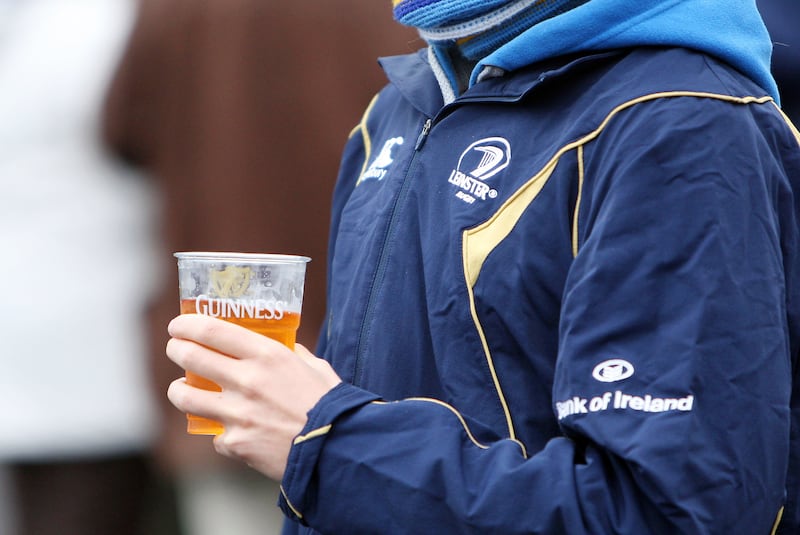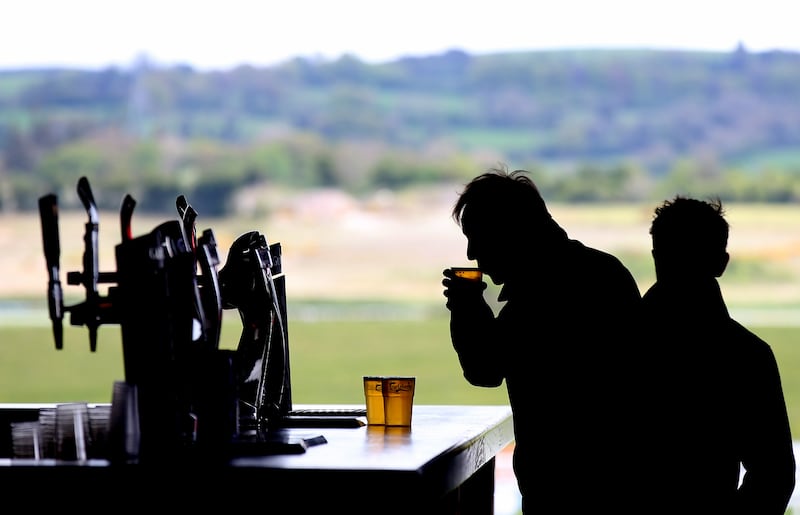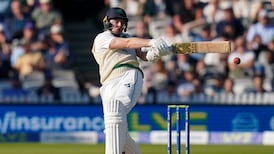At some point, the game was no longer enough. Sport made the shape-shifting step from being a form of entertainment, to being part of the entertainment industry. What it meant, among other things, was that fans became customers too. Consumers. A market. Including you.
Match days were parlayed into a “match day experience”, and that marketing shimmy opened up a panoply of selling points. Nobody was excluded for not caring passionately about the game. The target audience, now, was anybody. Everybody.
For sport, this new outlook came at a price. Fans had a higher pain threshold and lower expectations. Customers would want comfort. Better seating, cleaner toilets, ease of access, food. Drink. As an imperative of the business plan, venues were corrected. Souped up. Everyone gained. The moss and damp were scraped off the walls. There was a welcome for newcomers.
The trade-off was that it was no longer only about the game. It was also about the show: the smoke, the lights, the sound system, the overlay of “atmosphere”. Not just the steak, but the sizzle. And the sauce. Could the crowd not be trusted to make the appropriate noise? Yes, but. They came to be amused. It was a package deal. The game might be a crock. Control the controllables. There must be sizzle.
Test rugby at the Aviva for the last few years – how it feels, and how it sounds – is the evolutionary outcome of this process. The crowd is split between those who are desperate to support their team, and those who are prepared to do so between drinks. Punters are disturbed in their seats by other punters who want to beat the queue at the bar. Not everybody is sworn to the same faith. The “match day experience” was designed to accommodate day-trippers and curious agnostics too. No discrimination. Every penny is made equal.
At the heart of all this, sport’s push-and-pull relationship with drink is interesting. When the stadium-based sports joined the entertainment industry, drink, and all the faffing that goes with it, was brought inside the tent. For generations, having a drink on the day of a game was a separate activity with its own ecosystem. Once you reached the ground, though, it was only about the game. The lines of demarcation were absolutely clear.

To those who managed sport’s descent into the world of business, that was a lunatic arrangement. What they saw was a golden income stream. To flourish as a business the stadium needed to be a place of mass consumption. But managing this relationship was bound to be tricky, wasn’t it? How can you do a deal with the devil, and then appeal to its better angels?
Take the experience of our nearest neighbours. Football in Britain is an extreme and obvious example of the complexities in this relationship. A ban on drinking alcohol during football matches has been in place in Scotland since a drink-fuelled riot at the 1980 Scottish Cup final between Celtic and Rangers. Rugby in Scotland was released from this sanction in 2007, but the status of drink at football grounds has not changed.
Five years later, in 1985, the consumption of alcohol within sight of the pitch was banned at all English football grounds. About that time the game was besieged by hooliganism and in the last couple of seasons it has reared its head again. After the lawless scenes before and after the Euro 2020 final alcohol was banned from Wembley Way and English football went into another round of hard reflection.
It is not just football, though, and it is not just drink either. Before the pandemic, English cricket had become increasingly alarmed by the booze culture that had enveloped the white-ball game especially, and how it had become a deterrent for parents who wanted to bring their kids to evening matches. By the middle of last summer, crowd disorder had become such an issue that spectators were being ejected from grounds at a greater rate than ever and counties were issuing bans to offenders.
But having a drink is so bound up with the spectator experience at cricket matches that it would be commercial suicide for any venue to contemplate closing the bars, and nobody would even suggest it. If it was just about the game, the attendances would collapse.

Race tracks have a similar dependence on bar income. In recent years, though, big summer Saturdays at English racecourses have been blighted by brawling. After a particularly bad incident at Haydock Park in 2019, cocaine was highlighted as a contributory factor too. “The presence of illegal substances is, worryingly, a rising trend across all major spectator events,” said a spokesperson for the Racecourse Association.
In an interesting conversation on Newstalk last week, the sportswriter Kieran Cunningham broadened the point. Speaking about his experiences as a spectator at boxing events in the UK, he said that fighting in the crowd was a recurring issue. In that context, both drink and drugs were identified as fire starters.
About this time last year, British police reported that arrests for drug use had increased by 38 per cent at football matches in the first half of last season. “The vast majority of these are for cocaine use,” chief constable Mark Roberts told the BBC.
If recreational drinking is so integral to the “match day experience” it would be ridiculous to imagine that recreational drug-taking was not. That’s here too. At the Cork-Tipperary match last summer, I saw a Garda knocking on the doors of half a dozen locked cubicles in the men’s toilet under the Old Stand in Thurles. What did he think was going on behind the door?
In Irish sport, though, we’ve been blessed. If the atmosphere at the Aviva has been strangled in part by the traffic to and from the bar that is an abomination, but it is far removed from the most toxic outcomes on the spectrum. Mercifully, hooliganism has never been an issue for rugby or Gaelic games, or racing and it has only occasionally blighted football here.
Everybody can see the shift that sport has made in pursuit of the leisure buck and you don’t need to be an accountant to understand it. To you, dear customer, sport sends its thanks.
Can it ever return to just being about the game? Is that a lucrative market? No?
















